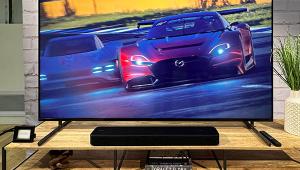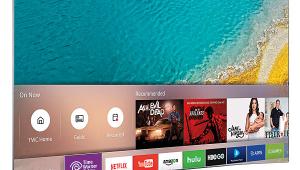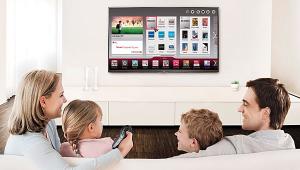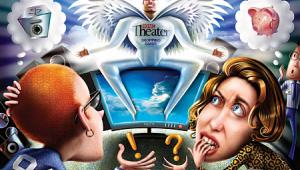Deep Cover Geoffrey Morrison answers his own questions!
What is HDTV? HDTV is an advancement of our TV system. It offers significantly higher resolutions, a widescreen aspect ratio, and the ability to have 5.1 surround sound.
What is the difference between an HD-ready TV and an HDTV? An HDTV has a built-in HDTV tuner. An HD-ready TV (or HD monitor) does not, so you will have to buy an external HDTV receiver (or get one from your cable or satellite company).
What is the life span of a plasma? Is it hard to fix? Is it hard to hang on a wall? The life span of a plasma varies greatly, depending on usage and model. Generally speaking, a plasma will have a half life of about 20,000 hours (some have more, some have less). By half life, I mean that it will be half as bright as it was the day you bought it. It will still be watchable; it just won't be as bright. This is a gradual change, so it will be hard to notice. If you turn your display's contrast all the way up and you watch a lot of CNN, you'll burn it in after a week and have to live with it. Good luck fixing anything. You do not have to recharge a plasma. Plasmas tend to be very heavy, so you shouldn't try to hang one on the wall by yourself. It's best to have a professional do it.
What is the difference between LCD, DLP, and LCOS? An LCD display has a lamp with a polarized light shone through one or more LCD panels. When a pixel is supposed to be dark on screen, that pixel polarizes in the opposite direction to block the light. A DLP chip has thousands of tiny mirrors that either shine toward the screen or away from it, depending on whether that pixel should be lit on screen. LCOS is like a combination of the two technologies. Polarized light is shone through an LCD-like panel to a mirrored surface on its back. If a pixel is supposed to be dark, that pixel polarizes in the opposite direction (like LCD) to block the light. These are gross oversimplifications, but this is generally how they work.
What is a progressive-scan DVD player? Regular TV is 480 lines interlaced (480i). In other words, it draws 240 lines and then quickly draws the other 240. A progressive-scan DVD player outputs all 480 lines at the same time (480p). This can create a smoother, possibly brighter image than you get with 480i. Only HDTVs and EDTVs (enhanced-definition TVs) can display a 480p image.
Can I get a high-def DVD player? Not yet. Perhaps by the end of this year, but we'll believe that when we see it.
What are DVD-Audio and SACD? These are high-resolution audio formats that offer between two and six dedicated channels of music. The HDTV of the music world. Far, far superior to CD. You need a player that plays these two formats and a receiver or pre/pro that has a six-channel analog input to accept the signal. Some new receivers have a special digital connection to certain DVD players.
Where should I put the speakers in my room? This is almost a trick question, due to the complexity of speaker and subwoofer placement. In the most general, simple terms: The center-channel speaker goes above or below your TV, the two main speakers go on either side of the TV, the surround speakers go beside or behind you, and the sub goes where it's most convenient (although it will most likely be the loudest in the corner).
Hopefully these simple answers will lead to more in-depth, specific conversations.-GM
- Log in or register to post comments



























































